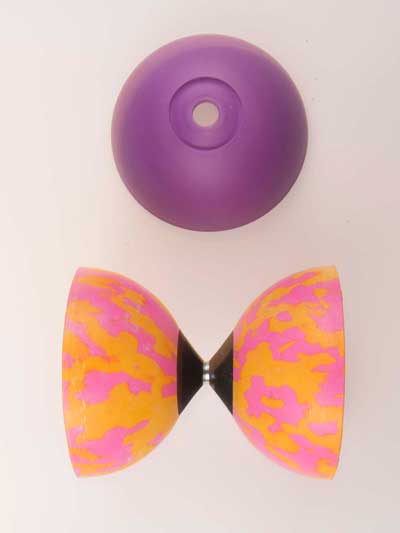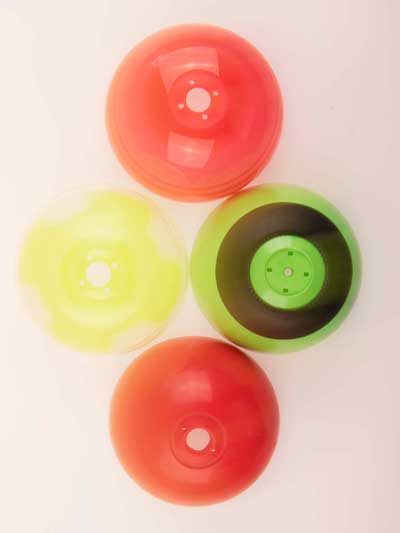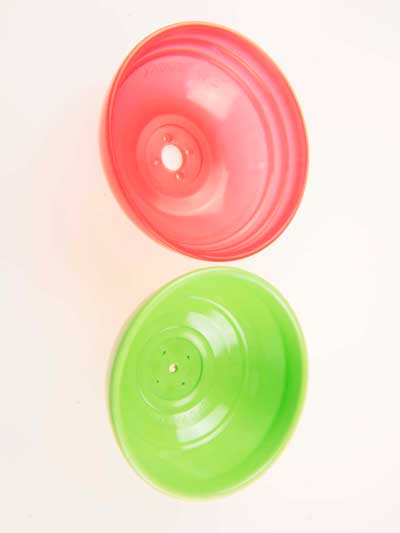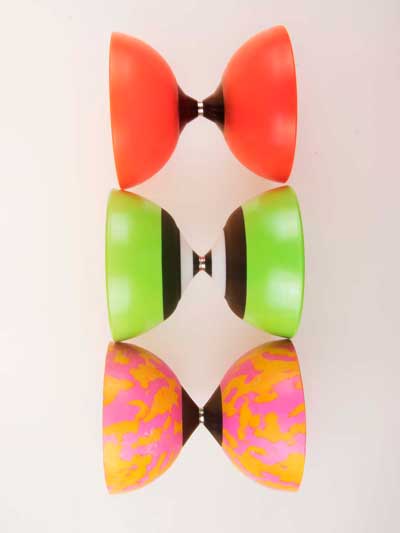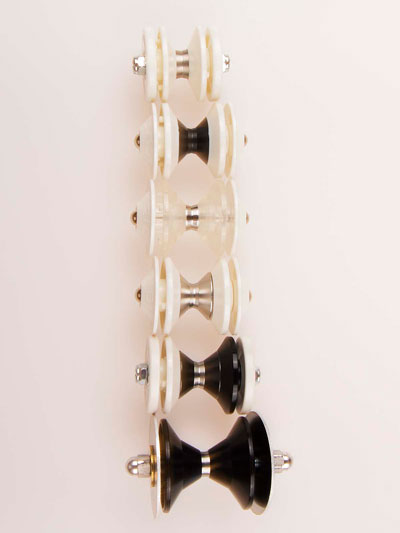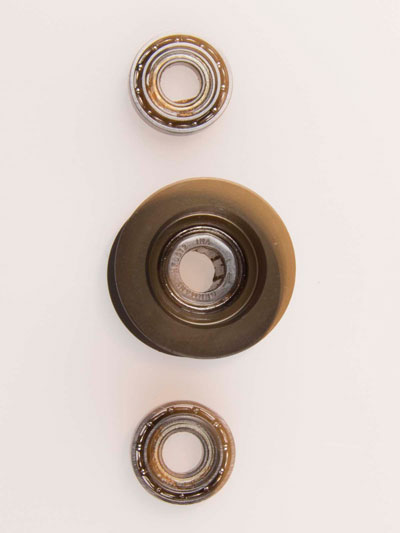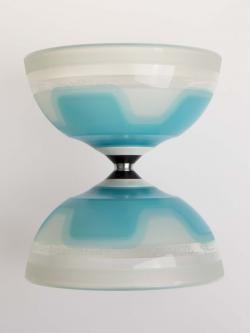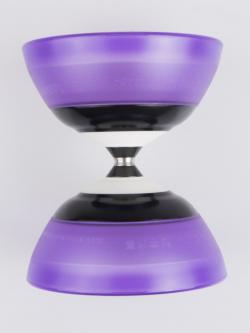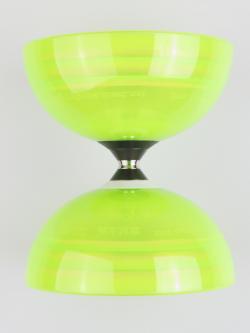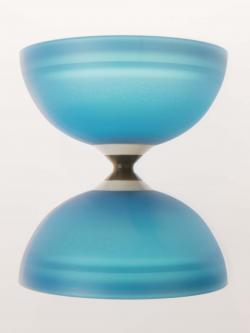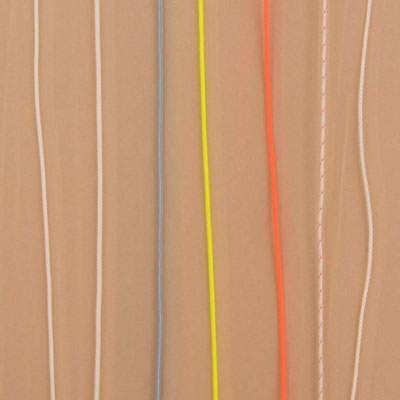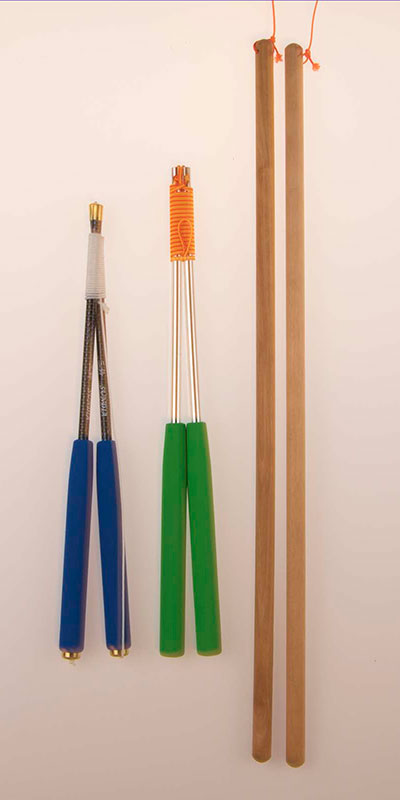How to Select a Diabolo
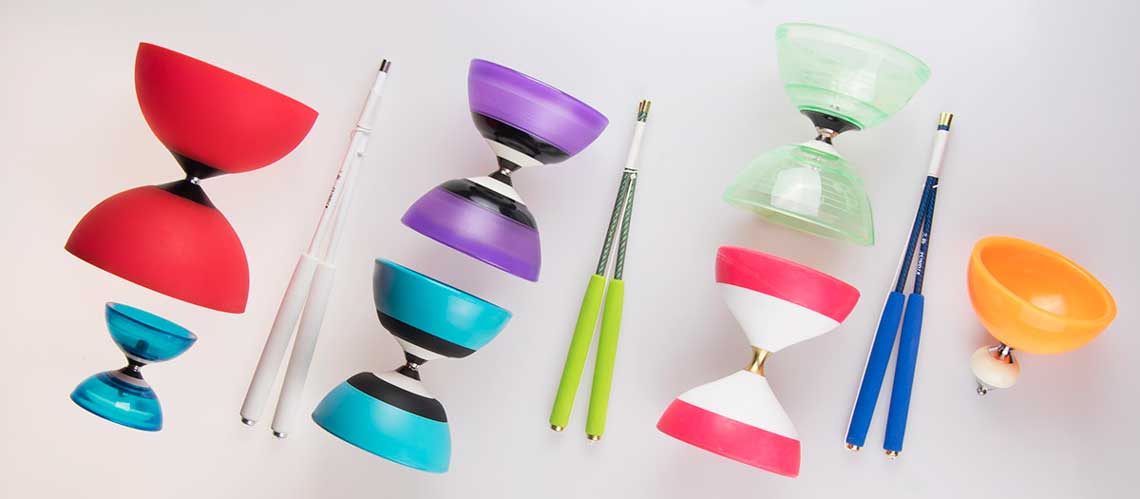
Diabolos are more complex than you might think at first glance. For raw beginners, most diabolos will work for learning very basic tricks. Intermediate or advanced tricks require more sophisticated designs. Finding the right one for you can be very confusing with so many diabolo brands available that all look similar. However, there is a big difference between low- and high-cost diabolos. The level and complexity of diabolo tricks has changed radically over the last five years. Many of the older, good-quality diabolos have outdated designs that are not suited for modern tricks. In this article, we try to explain the differences to help you select a diabolo best suited to your needs. In Asia the diabolo is much more popular than in the US and Western Europe, with the best players coming from Japan and Taiwan. They use the best equipment featuring the most innovative designs and quality. In all cases, you get what you pay for – the cheaper it is, the lower the quality. Chinese-made replicas of good diabolos are low-quality, regardless of how they look.
Rubber Diabolo Cups
There are many different kinds of materials used to make diabolo cups. In the past, early diabolo makers used rubber cups or rubber-like materials. The photo shows some high-friction cups, such as the Mister Babache Harlequin diabolo ( image at bottom) or the Henrys Circus diabolo (image at top), both designed in the 1990s. At the time, it was thought that these softer rubber cups would be safer for users. As it turns out they are not. When a rubber diabolo is spun at high speed, they can cause abrasion burns from too much friction on your skin. The soft rubber cup also cannot accommodate modern bearing axles that spin at very high speeds. High revolutions caused the rubber cup to wobble and flex at the center. Nevertheless, this rubber cup diabolo is still good for beginners and single diabolo players. They are also popular among the older crowd who have become accustomed to what they learned on at the time. A good-quality diabolo should spin perfectly smooth at high speeds. Cheap diabolos wobble because they are made using low-quality molds/machines that are unable to evenly distribute the plastic in the cup. Low-quality bearings can also cause the diabolo to wobble.
Plastic TPU Diabolo Cup
Modern high quality diablos are made with TPU plastic cups. This semi-transparent material is superior to a rubber or flexible plastic.
- The stiffness of TPU allows the diabolo to be spun at very high speeds without wobbling, so the cup can be used with high-speed bearing axles.
- It is very durable and will not break or distort when transported.
- It has very low friction when the diabolo string or hand-stick comes in contact with it.
- TPU can be made in translucent colors which are suitable for using with a LED lights in the diabolo.
- It is safe to use, as it cannot burn your skin when you hit yourself with a rapidly spinning diabolo.
- TPU comes in various degrees of hardness. Slightly softer shells have good characteristics but cannot be used in very warm weather (above 85 degrees) without wobbling. Advanced diabolo players have different diabolos for different weather conditions, specifically soft TPU for cold weather and hard TPU for warm temperatures.
- On high quality cups, you will often see various surface treatments. Some sections have a matte finish, while others are glossy. This is done to influence the cup’s frictional surface and thereby improve the diabolo’s performance.
Centrifugal Force of the Diabolo
All good-quality diabolos have an outside edge of the cup that is thicker than the rest of the cup. This weighted outside ring design gives the shell centrifugal force when spun and makes the diabolo easier to control. The outside weight must be specifically engineered. Too much weight results in a gyroscopic feel, which makes it difficult to change the diabolo’s angle. Too little weight on the outside edge makes it difficult to keep it aligned with the player. The photo below shows a green Sundia Evo G3 cup and the weight ring on the edge.
Diabolo Cup Weight
Modern diabolos should have a cup weight ranging from 100 to 105 grams each. In the past, it was thought that a higher-weight diabolo would be easier to spin and learn with. However, this no longer holds true when using modern axles, strings and sticks. The total weight of a 5-inch-diameter diabolo should be approx. 230-275 grams.
Diabolo Cup Inner Rings
If you look inside some of the high-quality cups, you will see raised rings (see image, green cup). The rings are positioned to add weight to the cup’s external region or to increase the thickness of the shell so that the diabolo will not wobble at high speed. Depending on the thickness and type of material used, the rings can vary in thickness, width and location. The top photo shows the Sundia Shining; one can see three rings that were added to increase the weight at the diabolo’s outer edge. In the bottom photo of a green Evo G3 cup, one can see the stability rings near the center. On this cup, one can also see the thickened edge that adds centrifugal force.
Recommendation for Diabolo Cups
- Intermediate to Advanced; should use a diabolo cup made from TPU and have a diameter of 5 inches.
- Beginner; a soft rubber cup or a hard TPU cups is fine for leaning. The cup diameter should be 5 inch, unless the juggler is under four feet tall. For children between 4 and 5 feet tall a lightweight cup is best.
Inter-Cup Spacing
The two half’s of the diabolo and connected together with an axle, or center. The axle is made in two parts, and cone shaped plastic insert that blends into the cup and a metal center where the string rides in the middle. The spacing and shape of space between the cups is very important. This effect how you correct the angle of the diabolo. If the diabolo starts to get off center, you correct it by moving the string towards one of the cups. Like in the photo left
If the spacing is to narrow, (like in the photo bottom of the image) then when playing you can accidentally hit the cup with the string and change the angle of diabolo. If the space is too wide top in photo, you have to move the string too far to correct the angle of the diabolo. The middle diabolo has the correct spacing between the cups.
The angle of the cone and cup to the axle is also critical. In a well-made diabolo like the Sundia Evo G3, the string comes in contact only with the center and the Teflon ring (see left image). In a poorly made diabolo (right image), the string makes full contact with the cone and the cup.This excessive friction between the string and cup makes the diabolo harder to control. When looking closely at the image, one can see the string laying in a gap between the center and the ring.
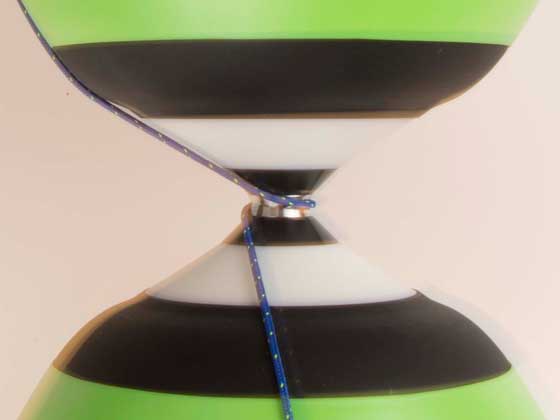
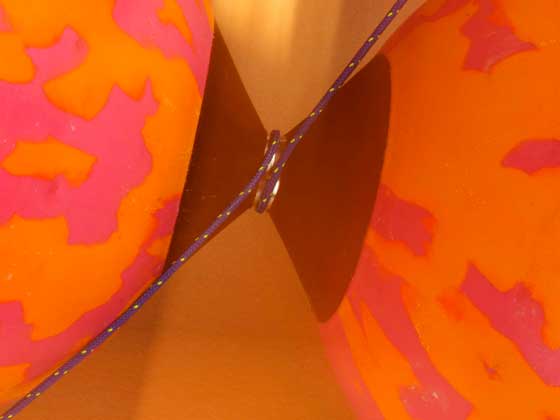
The angle of the cone and cup to the axle is also critical. In a well-made diabolo like the Sundia Evo G3, the string comes in contact only with the center and the Teflon ring (see left image). In a poorly made diabolo (right image), the string makes full contact with the cone and the cup. This excessive friction between the string and cup makes the diabolo harder to control. When looking closely at the image, one can see the string laying in a gap between the center and the ring.
Recommendation for Center Space
- Intermediate to Advanced; the string should not have a long contact point on the diabolo cup, as it will make angle correction for multiple diabolos harder to control.
- Beginner; the center spacing is not so important, as string friction on the cup is will not effect simple low speed diabolo angle corrections.
Diabolo Centers
As you can see in the photo, there are many kinds of centers made of various materials. There are two basic types of axles: fixed and bearing-type.
Fixed Axle
A fixed axle means that it cannot turn. The string’s friction causes the diabolo to rotate and when coasting the diabolo rotates on the string. The center, where the string comes in contact with the diabolo, can be made of steel, stainless steel, aluminum or anodized aluminum. All these metals vary in the amount of friction they produce. Anodized aluminum has the least amount of friction, while steel has the most. This makes a big difference in how long the diabolo spins on the string and how fast you can bring the diabolo up to speed. Modern diabolos with fixed axles are wider than older designs; also, narrow axles cannot be used for advanced tricks.
In the photo, you can see a range of axle widths. The bottom unit (photo at right) shows a wide axle and the top unit has a very narrow one; both of these are outdated designs, although they are suited for beginners, but not ideal for advanced play..
Bearing Axles
Other diabolos have a triple-bearing axle, which only spins in one direction. To gain speed, you pull up in the fixed direction and when resting the diabolo spins on the bearings. This allows it to spin much longer than on a fixed axle where the string friction on the center of the axle slows down the diabolo.
While there was a large variety in the past, most bearing axles currently utilize the same bearing-type and size. The difference between brands lies in the quality of the bearing. For example, Sundia uses German bearings, while Juggle Dream has opted for Chinese bearings. A German-made bearing has a longer service life and spin time than a Chinese one. Low-priced bearing diabolos all use low-quality Chinese bearings. The Chinese bearing also has much lower machining tolerances which causes the diabolo to wobble, when spun at high speed.
The photo on the right shows the three parts of the bearing: an inner bearing pressed into the center and an outer bearing on each side. In the photo is shows he new double outer bearing, which makes the Evo G3 more advanced with five bearings. The inner needle bearing and the two double bearings. The double side bearing works better as it has a bigger diameter than the single and reacts to centrifugal force much better without losing speed. Both the five bearing and triple-bearing axle was created by Sundia. So far only the triple bearing has copied by many others. The double outer bearing of the 5 bearing systems has not be copied so far. The unidirectional bearing is press-fit into the center and is the most critical of the three. Looking closely at the photo, one can see “Germany” stamped on the bearing; a cheap bearing would have no words stamped on it. You can also see the slots in this bearing that match the raised ribs of the diabolo’s shaft. If the shaft or bearing is low-quality, these ribs and slots will fail and the diabolo will spin in both directions. The widths of the central unidirectional and side bearings are a standard size. All diabolos must use this standard size, which is why you will notice that all diabolo centers have the same width. Some very cheap diabolos will omit the outside bearing and only have a center bearing. This does not work nearly as well, but it makes a cheap product look better than it really is.
Bearing Diabolo Maintenance
A bearing diabolo needs maintenance. If you do not clean and lubricate the bearing, it will wear out faster and have a shorter spin time. For periodic maintenance, spray it with WD-40 to clean out dust and metal fragments. After cleaning, blow out and dry the bearing to remove any residual WD-40. Then lubricate it with bicycle wheel-bearing lubricant (available at any good bike shop).
New Tricks Using a Bearing Diabolo
Bearing diabolos allow one to perform more complex tricks than in the past. Many difficult moves seen on YouTube performed by Japanese or Taiwanese players are made possible by using a bearing axle. When viewing a diabolo video, try to identify the type of diabolo, string and sticks used. Most high-level tricks require the correct combination of these three elements.
Recommendation for Diabolo Axle
- Intermediate to Advanced; while you can do many tricks with a fixed axle, many advanced tricks require a high quality bearing axle (triple bearing).
- Beginner; the center should be a fixed axel. You could start out with a ratchet bearing axel, but is is more complicated to learn.
Recommended Diabolos, Evo G3 (advanced), Shinning or Falcon (intermediate), Echo (beginner)
Click here to view our full line of Diabolos
Which kind of Diabolo String to Select
In the photo there is a range of string types starting from the left. If you enlarge the photo on you computer you can see that the strings surface, weave and thickness are very different.
- Radfactor 1.3 mm: medium tightness weave
- Radfactor 1.6 mm: heavy string, medium tightness weave
- Sundia 1.6 mm: heavy string, medium weave, with cotton added for stretch
- Babache 1.4 mm: loose weave, has some minor streatch
- Henrys 1.3 mm: tight weave, no stretch
- Play 1.25 mm: tight weave, no stretch
- Example of a low-quality string that is twisted (not braided)
The type of string used for diabolos is critical. There are five important factors when selecting your diabolo string.
- The tighter the weave of the string, the less friction it has. Conversely, loosely woven string has more friction. The more fiction the string has, the faster you can generate the diabolo’s spin speed, although the spin time will be less. If there is too much friction, the string will bind on the axle and get sucked into the center, thereby stopping the diabolo.
- The diameter of the string affects the string weight. Typical string is 1.2mm to 1.3 mm which is good for most diabolo tricks. Thicker string, e.g., 1.6mm, is used when a trick, such as a “whip catch” or “excalibur”, requires more string weight. You cannot do some tricks if the string is too light.
- Moisture content of the string. If the string becomes damp from contact with body sweat, it will greatly increase the friction of the string. Many performers have several sets of hand sticks available when performing. They can thus switch out the damp string with dry one that is on a different pair of hand sticks.
- The kind of fiber used affects how much friction the string has. Adding cotton gives the string some stretch, which is good for certain types of tricks.
- The axle material and the string need to be compatible. For example, a hard-anodized aluminum axle is more slippery and needs a higher-friction string than a stainless steel hub. The materials with the highest to lowest friction are as follows: steel < stainless steel < polished stainless < anodized aluminum. Another issue is the heat generated by friction on the center axle. If it is not correctly made, the string will overheat and not perform well.
How Often Should You Change Diabolo String
Diabolo strings are prone to getting dirty. This dirt increases the string’s friction, which can affect how often the string gets tangled in the center. It is possible to wash the string if it is not frayed and it will be nearly as good as new. The main issue is moisture because a moist string does not perform well. Therefore, it is a good idea to have several sets of sticks so that you have a few with dry string in reserve. Once the string dries out, it is still functional and suitable for use. Pay attention to your strings’ moisture levels in high humidity climates.
The string needs to be replaced when the outer fibers are worn or fraying.
Recommendation for Diabolo String
- Intermediate to Advanced; always use high quality string with the correct diameter for the tricks you are trying to do, and make sure the string is dry when in use.
- Beginner; any type of high quality string is good for starting out, just make sure it is a braided string, and keep the string dry.
How to Select a Diabolo Hand Stick
Diabolo sticks have changed radically over the years. It turns out that stick design is just as important as the design of the diabolo. There are five main factors to take into consideration.
- Stick length has changed significantly. In the 1990s, diabolo sticks were all made long, measuring approx. 19 inches; they have since gotten shorter and shorter. Now, the best length is around 12 inches. The reason for this change is that most of the time modern diabolo players use the stick pointing inward or towards each other. To do this, the sticks must to be short. You cannot do modern diabolo tricks with long sticks. The photo at right shows an long, old-fashioned hand stick.
- The string should be able rotate in the stick. Good diabolo sticks have the string going all the way through and tied at the end. This prevents the string from getting twisted. Having the string tied on the bottom also keep the stress off the tip. Many tips are glued in and cannot handle the force if the string was not tied at the bottom. Cheap diabolo hand sticks have the string tied to the end of the stick, as they are using a solid metal or wood stick, not a tube. This is fine for beginners, but is not suited for intermediate play. Renegade Juggling was the first to manufacture sticks with the string running through the stick and tied at the bottom (1993). In the photo, the blue sticks have the string tied through the end, while the green ones have the string tied at the top.
- The stick needs to be lightweight. The diablo stick should weigh 60-70 grams. Sticks weighing more than 75 grams are suited for beginners but not for intermediate play. The photo shows the first metal Henrys hand-sticks (green ones), which are considered heavy by today’s standards. This type of stick is only good for beginners.
- The stick’s material is important in order to keep the weight low. Wood, aluminum, steel, fiberglass and carbon fiber are some of the more common materials used. Most high-quality sticks are made of carbon fiber or fiberglass. There is a big difference in how the tube is made. Low-quality tubes are made with fibers that run only lengthwise, while high-quality tubes have cross-woven fibers. Very high-quality tubes have several different weave patterns on each layer. The weaving of the fibers greatly increases the strength of the stick. Low-cost carbon sticks will break very quickly and are made in China using linear fiber tubes. Another cheap design has a smaller diameter carbon tube covered with a plastic tube; this reduces the cost but makes for a weaker sticks.
- Adjusting to a new stick length can be a problem. The best way is to gradually go down in size until reaching the proper 12-inch size. Attempting to go from a 19-inch old-school unit to a 12-inch modern stick in one step will be very difficult.
Recommendation for Diabolo Hand Sticks
- Intermediate to Advanced; use a short hand stick around 12 inche in length, and under 70 grams in weight.
- Beginner; use a short handstick around 12 inches in length, the weight is not so important for average sized adults, but for small children is should be under 70 grams in weight.
High Toss Diabolos
Street performers often do the high toss trick, in which they throw the diabolo very high in the air (50 feet or more) and catch it on the string. This is done with a specially made small diabolo that has very strong parts. If you miss the high-toss catch often when using a normal diabolo, it will most likely break.
The Best Diabolo Size
When looking for a diabolo, be sure to note the diameter. Many low cost diabolo show photos that make the diabolo appear much larger than it is. The cup diameter should be about 5 inches for adults and children over 4 feet tall. On many websites, the diabolo might appear to be much bigger than it really is. For grade school-aged children, a 5-inch diabolo is too heavy and the 4-inch model is better. The larger the diabolo, the easier it is use. Use a 5-inch diabolo if possible. Models with diameters less than 4 inches are only suitable as high-toss diabolos.

